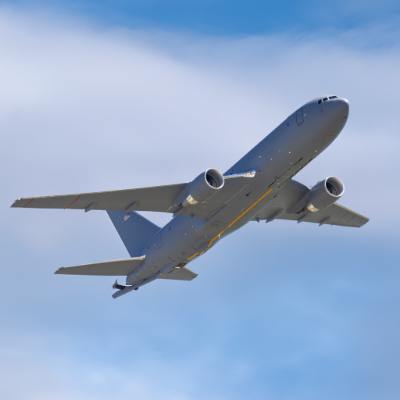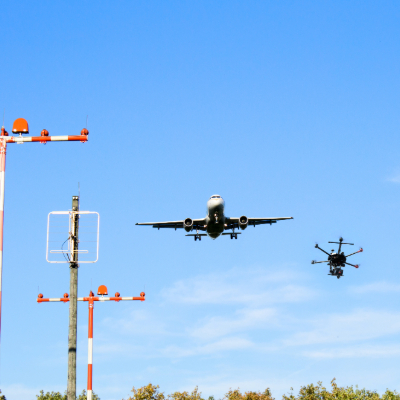RF insights using AI in the harshest environments
Spectrum monitoring is essential to aircraft security. It provides continuous awareness of the electromagnetic environment surrounding an aircraft. Modern aviation depends heavily on radio frequency (RF) signals for communication, navigation, collision avoidance, and air traffic control. Any interference—whether accidental or intentional—can disrupt these critical systems, potentially compromising the safety of the aircraft and its passengers. By monitoring the RF spectrum in real time, pilots and onboard systems gain insight into signal anomalies or threats, enabling faster response to emerging issues and helping to maintain safe and reliable flight operations.
As aircraft become increasingly connected and reliant on advanced avionics, the need to detect and understand RF activity becomes even more important. Spectrum monitoring helps identify unauthorized transmissions, jamming attempts, or unexpected signal behavior that could indicate interference or security risks. This technology not only supports situational awareness but also adds a layer of resilience in complex or congested airspace. From commercial jets to business and tactical aviation, proactive spectrum awareness is becoming a key component in ensuring the safety and integrity of flight.
AI and Edge Computing for Aerospace
Integrating AI into spectrum monitoring enables faster, smarter detection of anomalies in the RF environment—something increasingly important for tactical and advanced aircraft platforms. AirStack is uniquely suited for deploying AI-based detection algorithms thanks to its modular, containerized architecture. This approach allows operators to run custom or third-party AI models securely and efficiently, without interfering with other system components. Whether developed in-house or sourced from trusted vendors, these containerized applications benefit from hardware acceleration and seamless deployment on embedded platforms.
In addition to flexibility, AirStack also prioritizes cybersecurity and system integrity. Its architecture enforces isolation between containers, reducing the risk of cross-system vulnerabilities and maintaining operational safety. This makes AirStack not only a powerful tool for AI-driven spectrum awareness, but also a trustworthy platform for maintaining resilience in the face of cyber and electronic threats.
AIR-T + AirStack

Cognitive Algorithm Deployment System (CADS)
The combination of CADS and the Cognitive Algorithm Virtual Environment (CAVE) offers a powerful, end-to-end solution for deploying AI-enabled capabilities in real-world RF environments. Together, they create a seamless workflow for rapid AI algorithm testing to operational execution. Developers can build, test, and refine containerized AI applications within CAVE—a virtual environment that mirrors the deployment conditions of CADS—ensuring that software transitions smoothly from lab to field without rework.
CADS delivers advanced computing capabilities for aircraft systems that face limitations in adopting the latest AI technologies. It enables seamless integration of modern AI workloads in platforms where traditional hardware may fall short. Proven through deployment across a range of aircraft—from general aviation to high-performance tactical systems—CADS offers a flexible, flight-tested solution for bringing real-time AI to the edge.

Drone Detection for Airspace
By combining real-time spectrum sensing with AI-driven signal analysis, AIR-T with AirStack provides a robust solution for this challenge. Using the system’s advanced RF monitoring capabilities, operators can passively detect drone control signals without relying on line-of-sight or traditional radar. AirStack enables rapid deployment of custom or third-party classification algorithms, allowing the system to identify specific drone models or control protocols based on their unique RF signatures. This edge-based approach supports real-time threat assessment and integration with broader airspace management systems, enabling proactive mitigation and enhancing situational awareness in sensitive environments such as airports, stadiums, and urban centers.
